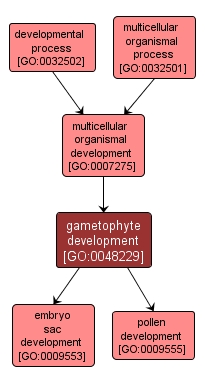| Desc: |
The process whose specific outcome is the progression of the gametophyte over time, from its formation to the mature structure. The gametophyte is the gamete-producing individual or phase in the life cycle having alternation of generations. An example of this process is found in Arabidopsis thaliana. |














